
How to Use Uh-oh Battery Level Indicator Kit: Examples, Pinouts, and Specs
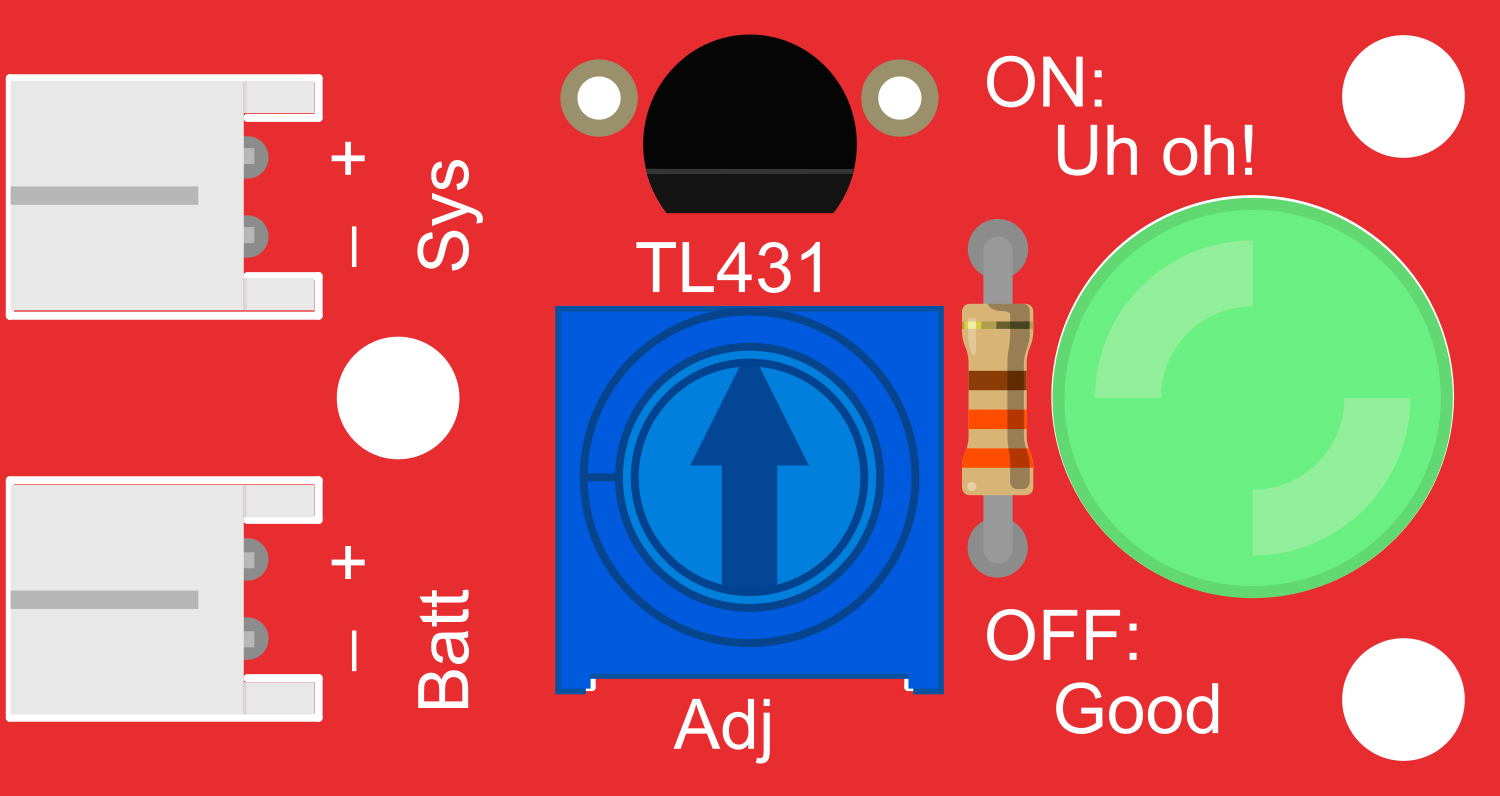
 Design with Uh-oh Battery Level Indicator Kit in Cirkit Designer
Design with Uh-oh Battery Level Indicator Kit in Cirkit DesignerIntroduction
The Uh-oh Battery Level Indicator Kit is an educational and practical tool designed for electronics enthusiasts and hobbyists. This DIY kit enables users to construct a simple yet effective battery level indicator circuit, which uses a series of LEDs to visually represent the remaining charge in a battery. It is particularly useful for portable projects where monitoring battery life is crucial.
Explore Projects Built with Uh-oh Battery Level Indicator Kit
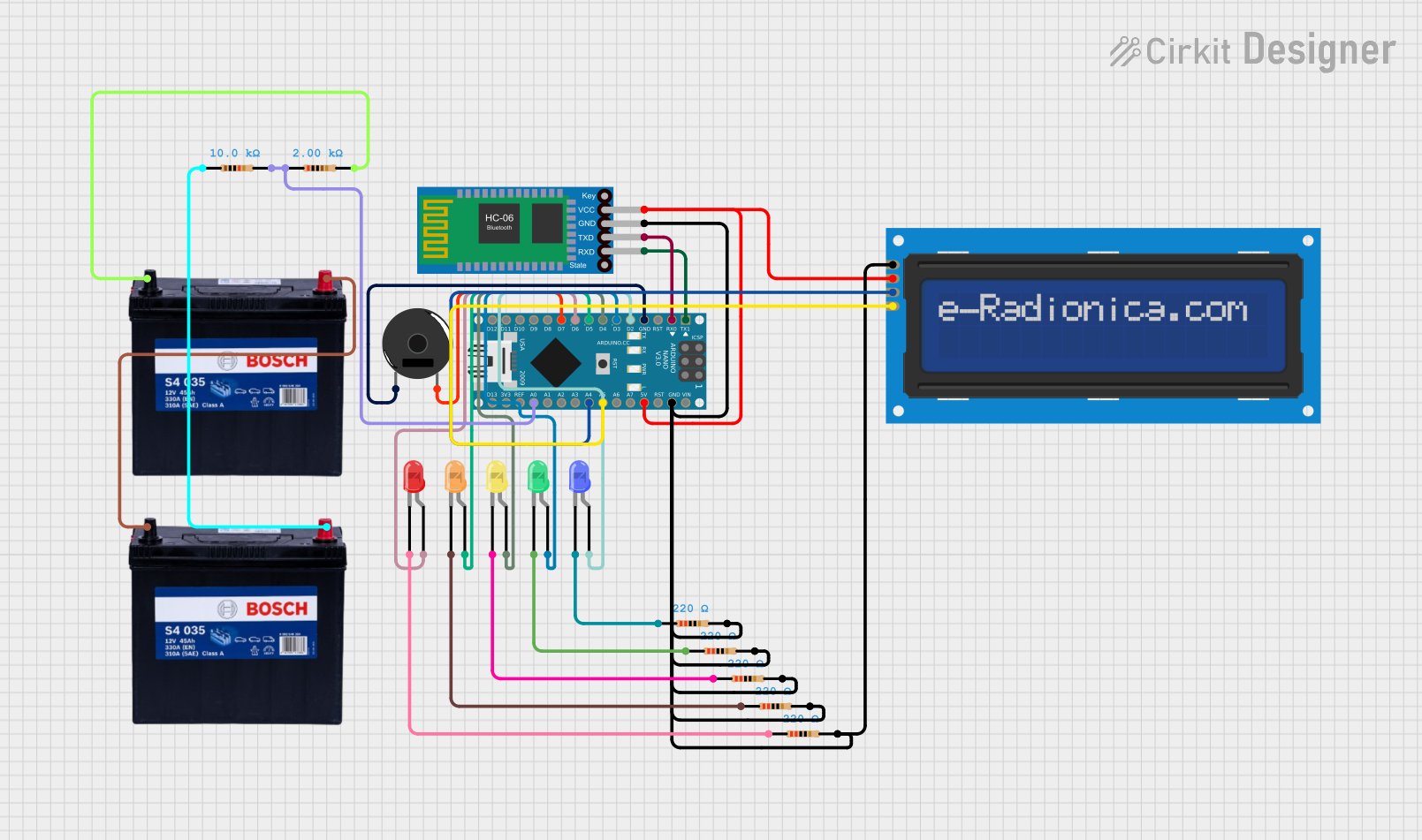
 Open Project in Cirkit Designer
Open Project in Cirkit Designer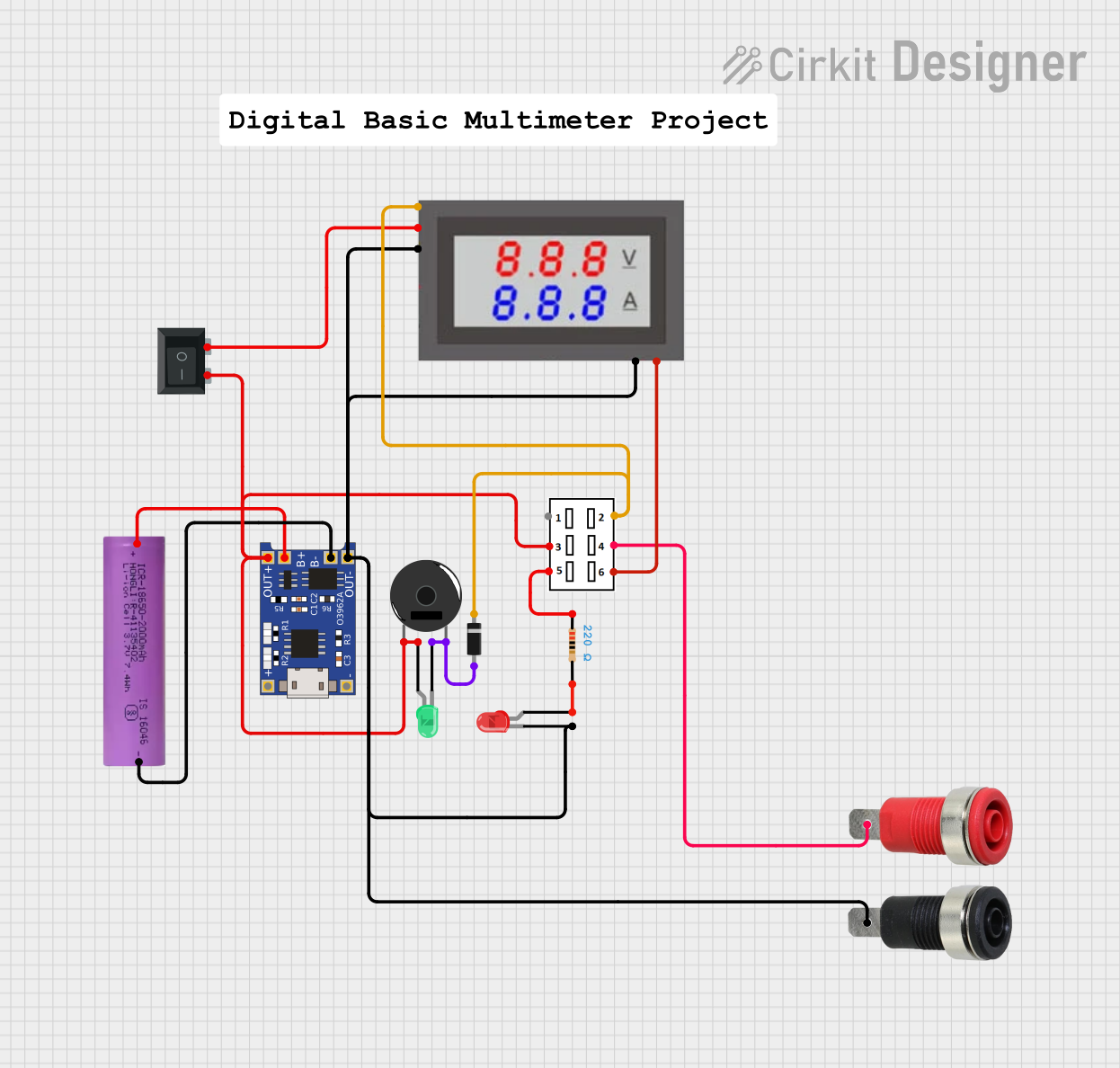
 Open Project in Cirkit Designer
Open Project in Cirkit Designer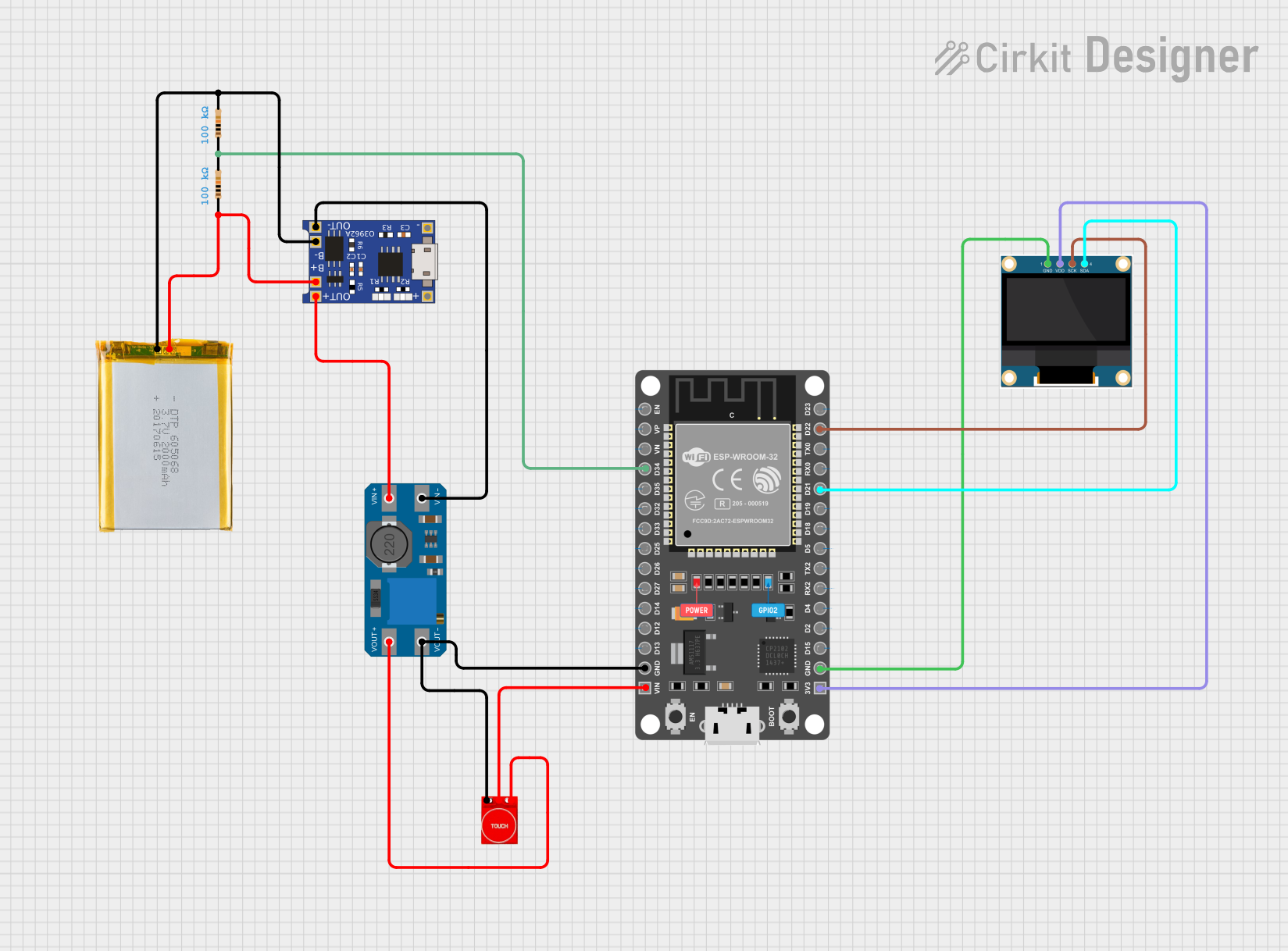
 Open Project in Cirkit Designer
Open Project in Cirkit Designer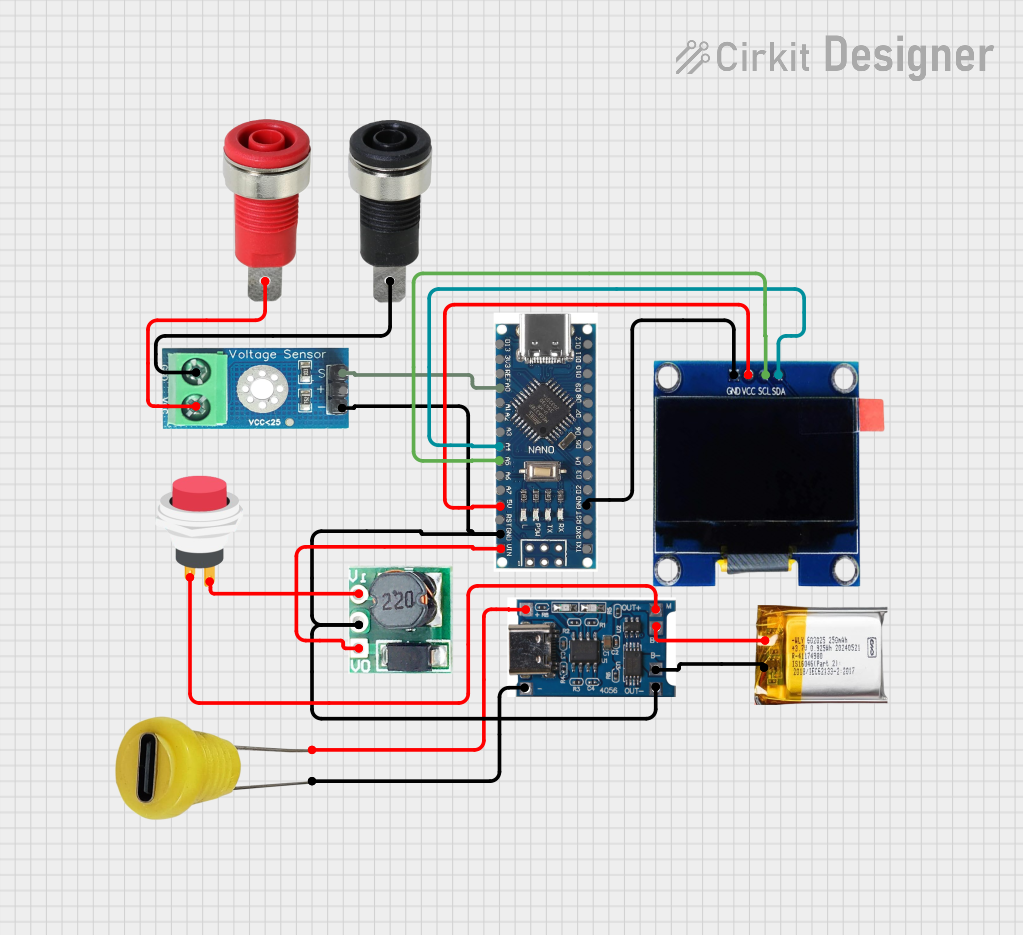
 Open Project in Cirkit Designer
Open Project in Cirkit DesignerExplore Projects Built with Uh-oh Battery Level Indicator Kit

 Open Project in Cirkit Designer
Open Project in Cirkit Designer
 Open Project in Cirkit Designer
Open Project in Cirkit Designer
 Open Project in Cirkit Designer
Open Project in Cirkit Designer
 Open Project in Cirkit Designer
Open Project in Cirkit DesignerCommon Applications and Use Cases
- Portable electronic devices
- DIY electronics projects
- Educational purposes for learning about voltage thresholds and LED indicators
- Remote controls, flashlights, and other battery-operated gadgets
Technical Specifications
Key Technical Details
- Operating Voltage Range: Typically 3V to 4.5V
- Current Consumption: Dependent on the number of LEDs lit
- Power Ratings: Minimal, as it is designed to consume low power to avoid significant battery drain
- Indicator Levels: Typically 3 to 5 LEDs indicating various charge levels
Pin Configuration and Descriptions
| Pin Number | Description |
|---|---|
| 1 | Ground (GND) |
| 2 | Voltage Input (VIN) |
| 3 | LED 1 Output (Highest Level) |
| 4 | LED 2 Output |
| 5 | LED 3 Output |
| 6 | LED 4 Output (Lowest Level) |
Usage Instructions
How to Use the Component in a Circuit
- Assembly: Follow the provided instructions to assemble the kit. Solder the components onto the provided PCB, ensuring correct orientation and secure connections.
- Connection: Connect the ground pin to the negative terminal of your battery and the voltage input pin to the positive terminal.
- Mounting LEDs: Place the LEDs in a visible location on your project, ensuring they are correctly oriented (long leg to positive).
- Testing: Once connected, the LEDs should light up corresponding to the battery's voltage level.
Important Considerations and Best Practices
- Voltage Calibration: Ensure that the voltage thresholds for each LED are correctly set for your specific battery type.
- Power Consumption: To conserve battery life, consider using high-efficiency LEDs.
- Protection: Use a current-limiting resistor with each LED to prevent damage.
- Isolation: If integrating into a larger circuit, ensure that the indicator circuit is isolated from high-current paths.
Example Code for Arduino UNO
// Uh-oh Battery Level Indicator Kit - Example Arduino Code
// Connect the Uh-oh Battery Level Indicator's VIN to an analog pin for monitoring
const int batteryPin = A0; // Analog pin connected to Uh-oh Battery Level Indicator VIN
const int ledPins[] = {3, 4, 5, 6}; // Digital pins connected to the LED outputs
void setup() {
// Initialize the LED pins as outputs
for (int i = 0; i < sizeof(ledPins)/sizeof(ledPins[0]); i++) {
pinMode(ledPins[i], OUTPUT);
}
}
void loop() {
// Read the battery level from the Uh-oh Battery Level Indicator
int batteryLevel = analogRead(batteryPin);
// Turn on the appropriate number of LEDs based on the battery level
for (int i = 0; i < sizeof(ledPins)/sizeof(ledPins[0]); i++) {
if (batteryLevel > i * 1023 / sizeof(ledPins)/sizeof(ledPins[0])) {
digitalWrite(ledPins[i], HIGH); // Turn on the LED
} else {
digitalWrite(ledPins[i], LOW); // Turn off the LED
}
}
// Delay for a bit before reading the battery level again
delay(1000);
}
Troubleshooting and FAQs
Common Issues Users Might Face
- LEDs Not Lighting Up: Ensure all connections are secure and the battery is charged.
- Incorrect LED Indication: Verify that the voltage thresholds are correctly set for your battery type.
- LEDs Always On/Off: Check for short circuits or miswiring in your assembly.
Solutions and Tips for Troubleshooting
- Double-Check Assembly: Revisit the kit instructions and ensure all components are correctly placed and soldered.
- Battery Check: Use a multimeter to confirm the battery's voltage and compare it with the indicator's thresholds.
- Resistor Values: Confirm that the current-limiting resistors are of the correct value for your LEDs.
FAQs
Q: Can I use the Uh-oh Battery Level Indicator Kit with a rechargeable battery? A: Yes, but ensure that the voltage thresholds are appropriate for the rechargeable battery's chemistry.
Q: How can I adjust the voltage thresholds for each LED? A: The kit typically includes a method to adjust thresholds, such as variable resistors or a programmable component. Refer to the specific kit instructions for details.
Q: Is it possible to use more or fewer LEDs for different battery levels? A: Yes, the kit can be modified to use a different number of LEDs, but this may require changes to the circuit design and calibration.
Remember, this documentation is a starting point. Always refer to the specific instructions and data sheets provided with your Uh-oh Battery Level Indicator Kit for the most accurate and detailed information.